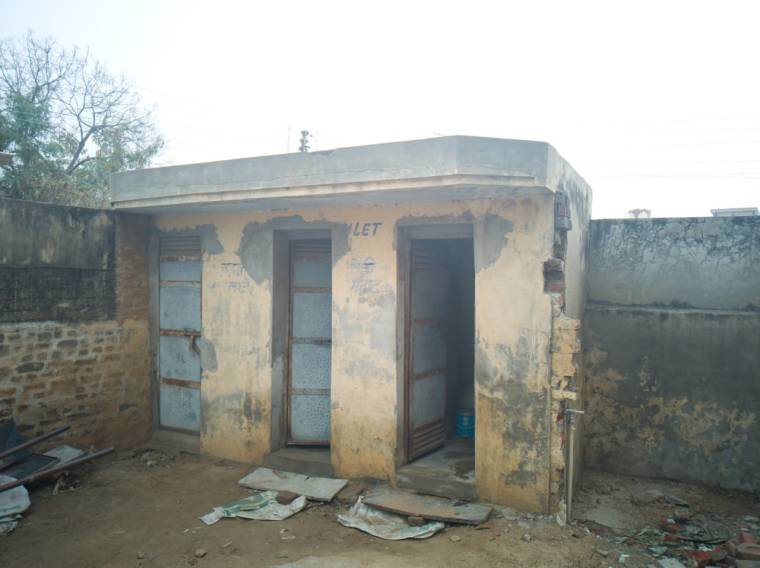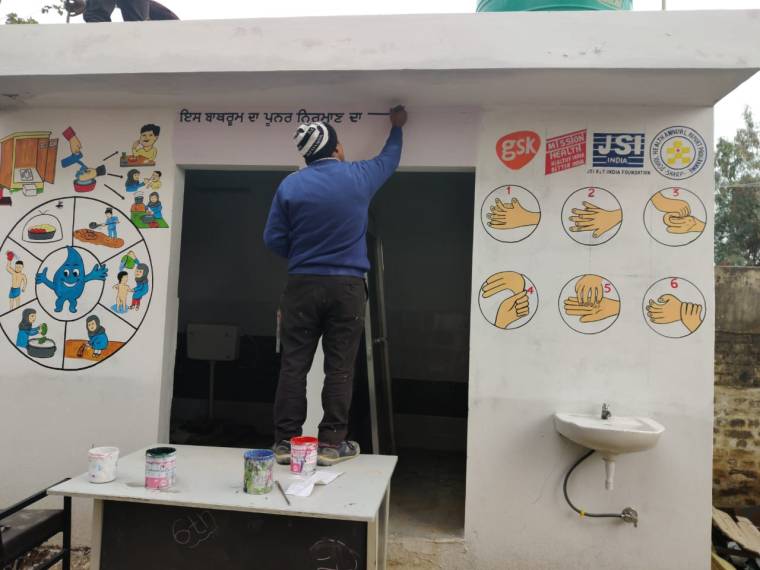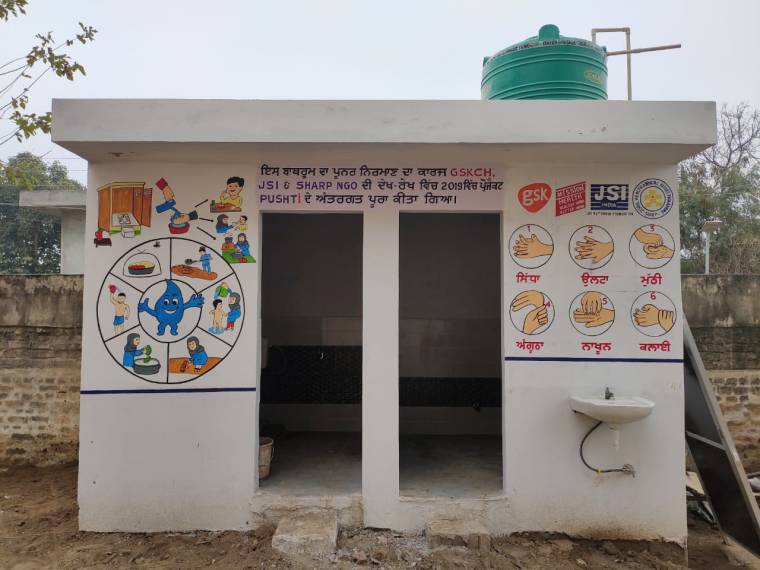Water, Sanitation & Hygiene: Advocating SDG 6 & Swachh Bharat with Project PUSHTi
The Government Secondary School in Ramgarh is located at an hour’s distance from the Patiala district of Punjab. More than half of the school’s attendees are girls, but over 50% of them drop out by the time they hit puberty. There is one toilet for boys and one for the female faculty, which is shared by over 300 female students of the same school. The structure allocated for the female toilet had turned into quicksand over the years, with roof and walls reeking of termite and lost dreams of hundreds of young girls of attending a decent school.
 Condition of toilets at Government Secondary School, Ramgarh in October 2019
Condition of toilets at Government Secondary School, Ramgarh in October 2019
Did you know that over 23 million women in India drop out of school every year when they start menstruating? A majority of these are due to a lack of safely managed sanitation services.
The Joint Monitoring Programme Report 2017 by UNICEF & WHO estimated that 61% of the global population (4.5 billion people) lacked safely managed sanitation services. These people either used basic toilets or latrine (2.1 billion), shared toilets among several households (600 million), used poorly constructed latrines or buckets (856 million), or defecated in the open (892 million). From the 892 million who practiced open defecation, over 524 million people come from India alone – 40% of our total population.


Sustainable Development Goal 6 and the Swachh Bharat Abhiyan strife towards ODF and promote WASH goals. Despite successful planning and launch, four years into the Abhiyan, India is far from elimination of open defecation. In the three phases of the WASH program launch (Planning, Implementation and Sustainability), the biggest barricade for India has been that of Implementation and Sustainability. Project PUSHTi took a maiden step in Patiala towards contributing to India and the UN’s WASH goals.
- Planning Phase: Hearing about the problems of the school and hundreds of girls in Ramgarh, Team PUSHTi performed a need assessment to identify the costs, disparities of equipment and awareness of WASH indicators amongst the school faculty and students. A builder was hired to inspect what of the old structure could be salvaged and what had to be installed. A blueprint of a separate toilet for female students began to come into place.


- Implementation Phase: After procurement of funding, the renovation was kick-started with floor and wall tiling and installation of toilet seat and washbasin. A water tank was installed to ensure unhindered water supply for all the years to come. This was followed by technicalities like plumbing, electrical connectivity, and necessary branding.
 Renovation work in process at Government Secondary School in Ramgarh
Renovation work in process at Government Secondary School in Ramgarh
- Sustainability Phase: Besides water tankers and electrical assistance, a major component of ensuring Sustainability was creating social and behavioral communication change platforms (SBCC). This was achieved through wall paintings on hand washing; importance of sanitation, hygiene and interactive messages for students to comprehend.


A little more than a month later, the toilet was ready to be used. Using PUSHTi’s interventions as a model, we understand how little effort a massive change requires. Lack of sanitation facilities are in direct relation to the poverty index and malnutrition. By enabling one intervention at a time, we can solve real-time problems of social stratification and nourishment.
Write to us with your story of innovation or contribution towards School Health. Let’s make Bharat truly a Swachh Bharat!
Written by-
Mahima Mehra, SHARP NGO
 The post-renovation facade of toilets at Government Secondary School in Ramgarh in December 2019.
The post-renovation facade of toilets at Government Secondary School in Ramgarh in December 2019.
